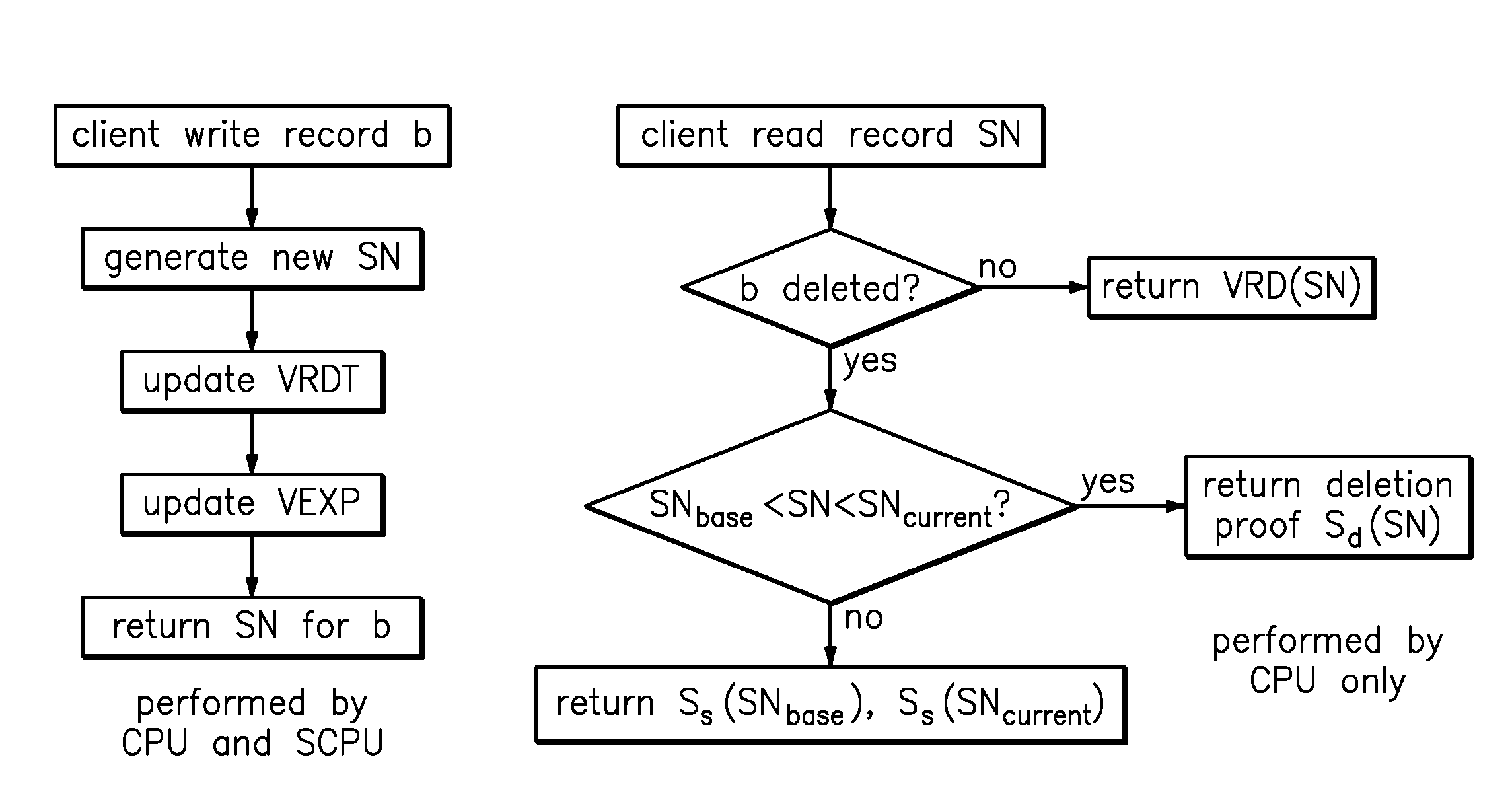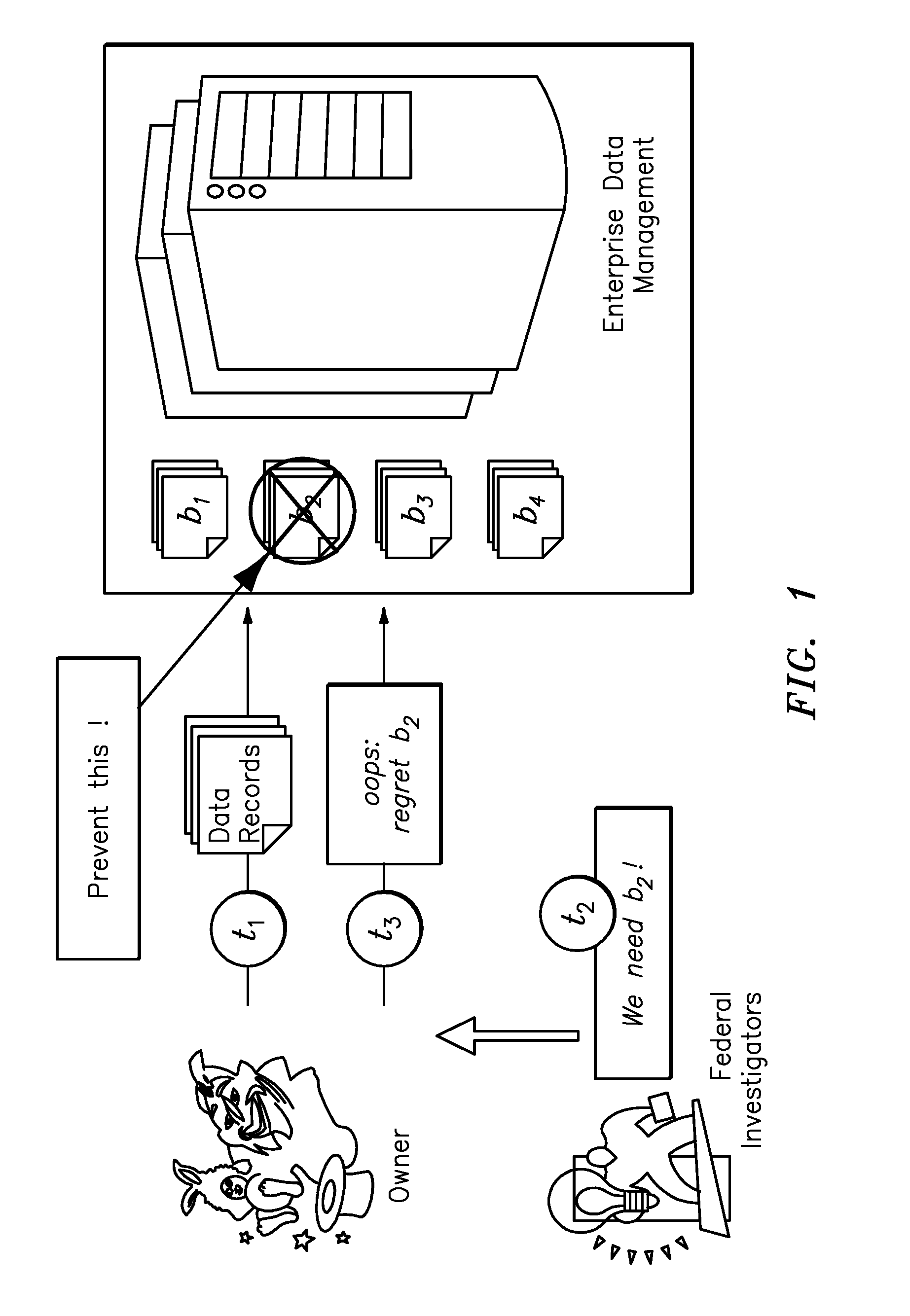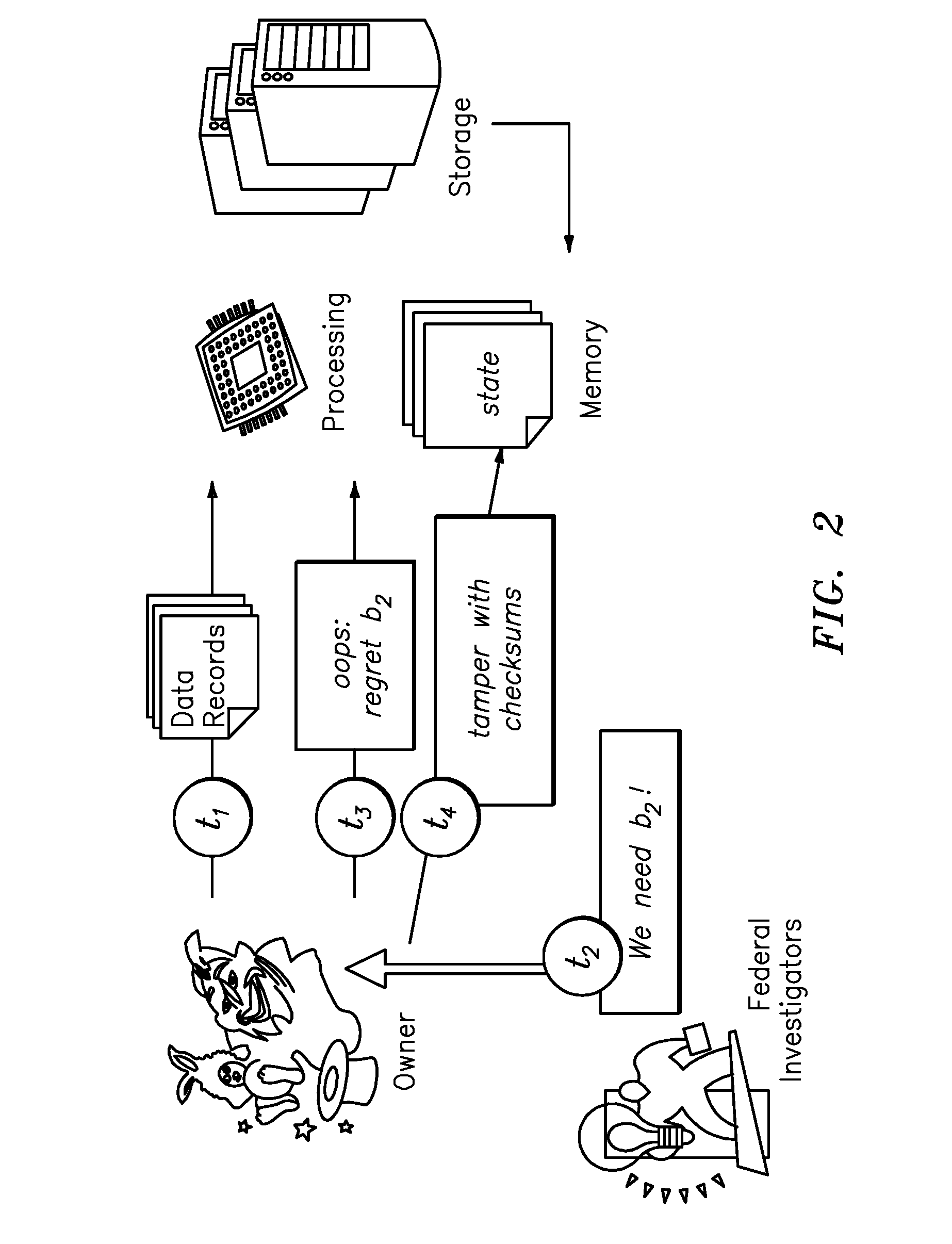Method and apparatus for tamper-proof wirte-once-read-many computer storage
a computer storage and computer technology, applied in the field of methods and apparatus for tamperproof wirteoncereadmany computer storage, can solve the problems of requiring a relatively large amount of space, so as to minimize the associated overhead and avoid malicious acts.
- Summary
- Abstract
- Description
- Claims
- Application Information
AI Technical Summary
Benefits of technology
Problems solved by technology
Method used
Image
Examples
Embodiment Construction
[0026]The following detailed description of preferred embodiments of the invention will be made in reference to the accompanying drawings. In describing the invention, explanation about related functions or constructions known in the art are omitted for the sake of clearness in understanding the concept of the invention, to avoid obscuring the invention with unnecessary detail.
[0027]Reference herein is made to timestamps generated by the SCPU and deployed to assert the freshness of integrity constructs. In this context, the SCPUs maintain internal, accurate clocks protected by their tamper-proof enclosure to preclude the requirement for additional handling of time synchronization attacks by the insider adversary. Specifically, as long as client clocks are relatively accurate (these clocks are not under the control of the server), time synchronization is not an issue. Unless otherwise specified, the term encryption is used to denote any semantically secure (IND-CPA) encryption mechan...
PUM
 Login to View More
Login to View More Abstract
Description
Claims
Application Information
 Login to View More
Login to View More - R&D
- Intellectual Property
- Life Sciences
- Materials
- Tech Scout
- Unparalleled Data Quality
- Higher Quality Content
- 60% Fewer Hallucinations
Browse by: Latest US Patents, China's latest patents, Technical Efficacy Thesaurus, Application Domain, Technology Topic, Popular Technical Reports.
© 2025 PatSnap. All rights reserved.Legal|Privacy policy|Modern Slavery Act Transparency Statement|Sitemap|About US| Contact US: help@patsnap.com



